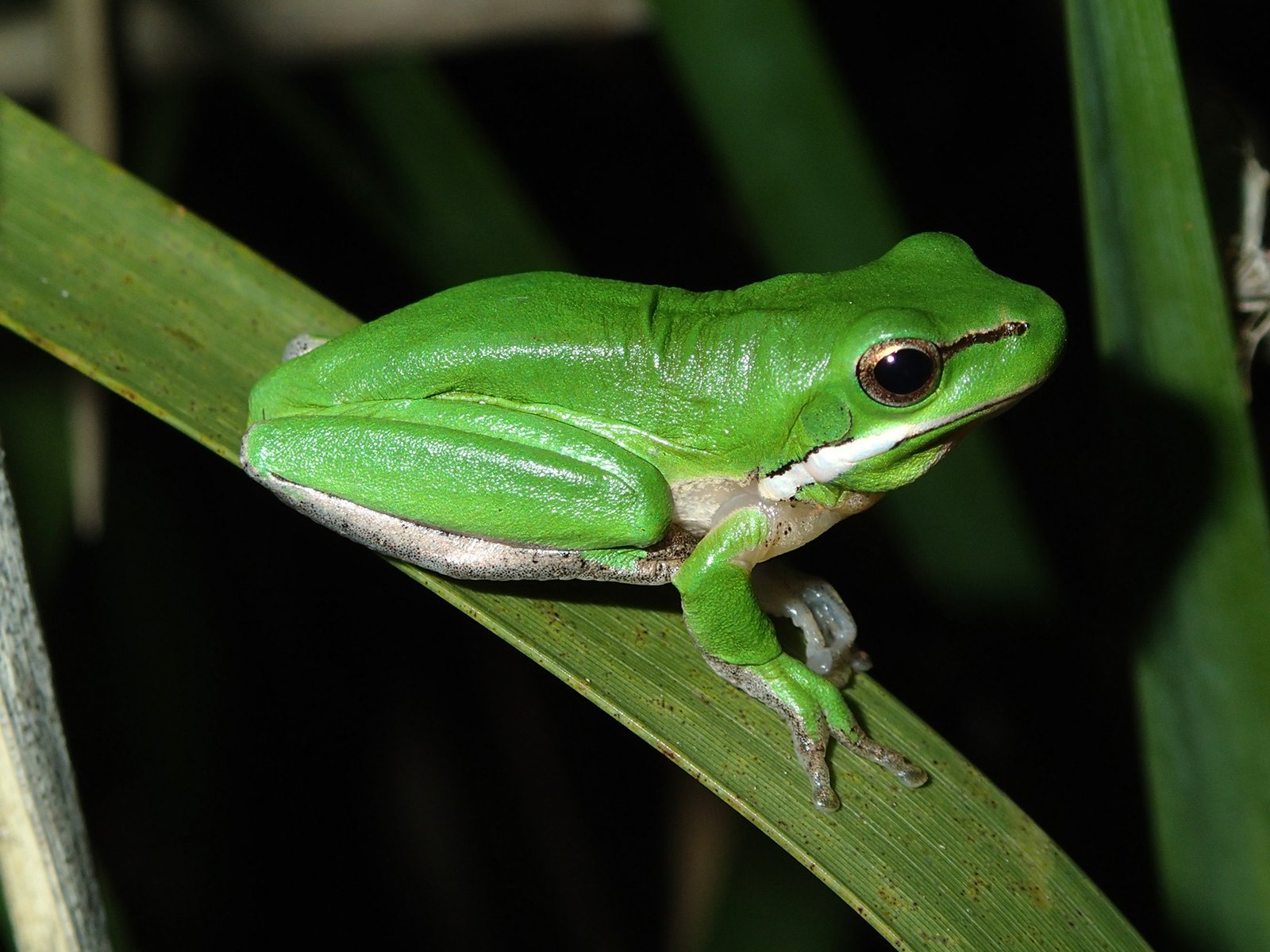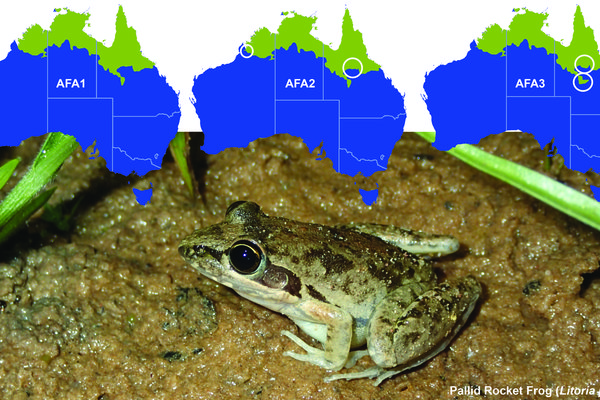The FrogID dataset 3.0: over a quarter of a million frog records now online and open access
The third annual release of FrogID data is now available to advance frog ecology and conservation in Australia.
Frogs are a vital part of most Australian ecosystems, and amongst the first animals to respond to environmental change. We’ve already lost at least four species of frog and dozens more are threatened with extinction. On top of this, most of our more than 240 native frog species are also poorly known. Remarkably, we don’t even know how many species of frog we have in Australia, with six frog species new to science in just the last year! We desperately need more information on Australia’s frogs so that we can better understand and conserve them.

© Nadiah Roslan
Thankfully, thousands of citizen scientists across Australia, armed with their smartphone and the FrogID app, have provided an amazing amount of data to help further our understanding of frog diversity and ecology throughout Australia. FrogID was launched in 2017, and the first public instalment of the FrogID database was released in 2020 (55,000 expert-validated records of frogs across Australia). The second instalment of over 126,000 records followed. Here we announce the release of the FrogID dataset 3.0.
The FrogID dataset 3.0 represents data gathered during the first three years of FrogID, with frog records from year 3 added and data from the previous two years added to and updated. In the first three years of the project, over 16,000 FrogID users from across Australia recorded the calls of 204 frog species, resulting in over 272,000 biodiversity records of frogs (a record of a species of frog calling at a particular time and place) - more than double that of the last release (126,000)!
The FrogID database now represents about one third of all frog records in the country and around 80% of all frog records gathered during the time period of this dataset (Atlas of Living Australia). The size of this dataset demonstrates the power of people working together to gather quality scientific data to inform frog conservation, and conservation more broadly.
The most commonly recorded species in the dataset remains steady across years, with the aptly named Common Eastern Froglet (Crinia signifera) taking out the top spot again, with almost 50,000 records in three years! The next commonly recorded species were the backyard-loving Striped Marsh Frog (Limnodynastes peronii) and Peron’s Tree Frog (Litoria peronii), followed by the rural-loving Eastern Dwarf Tree Frog (Litoria fallax), and Spotted Marsh Frog (Limnodynastes tasmaniensis).
Some highlights of the latest dataset include large numbers of records of the two most recently scientifically named species, the Slender Bleating Tree Frog (Litoria balatus) and the Screaming Tree Frog (Litoria quiritatus). These species were scientifically named by a team of researchers including myself, and used calls recorded as part of the FrogID project in the scientific paper describing the new species (read more). Records collected for these species before they were scientifically named have now been updated in the dataset. In past releases both species were all identified as the Bleating Tree Frog (Litoria dentata), the species that both the Screaming and Slender Bleating Tree Frog were previously confused with. In addition, the dataset includes a single record of the tiny, rainforest-dwelling Wollumbin Pouched Frog (Assa wollumbin), and the recently rediscovered endangered population of Tusked Frogs (Adelotus brevis) west of Tenterfield (read more).

The rural-loving Eastern Dwarf Tree Frog (Litoria fallax), Pinkett NSW.
Image: Jodi Rowley© Jodi Rowley

Spotted Marsh Frog (Limnodynastes tasmaniensis), New England Tablelands.
Image: Jodi Rowley© Jodi Rowley

The backyard-loving Striped Marsh Frog (Limnodynastes peronii), Barrington Tops NP, NSW.
Image: Jodi Rowley© Jodi Rowley
As in previous years, we follow ethical data publication guidelines and consider certain frog locality records as sensitive, taking into account the conservation status of the species and the threats that it faces. The exact localities of any ‘sensitive’ species are not made public, and their location is given only to 0.1 decimal degrees (about 11km). Some very highly threatened frog species recorded via FrogID, such as the Critically Endangered Hosmer’s Nursery Frog (Cophixalus hosmeri) are not included in the public dataset - this is a small fraction of the dataset, just over 300 records of 10 species. The exact locality data for such sensitive species is provided to state biodiversity atlases to help inform conservation and can also be requested from the FrogID project.
The FrogID database is a huge resource to researchers, land-managers and anyone interested in learning more about Australia’s frogs. For example, it’s already helping us understand how frog species richness changes across the country (read more), which Australian frog species are best equipped to survive the human world (read more), and how the Black Summer 2019/2020 bushfires impacted our frogs (read more). In the wake of increasing environmental change, including climate change, and a mass mortality event of frogs across Australia in winter 2021 (read more), the FrogID dataset has never been more important.
Dr Jodi Rowley, Curator, Amphibian & Reptile Conservation Biology, Australian Museum Research Institute & UNSW Sydney.
Primary citation for FrogID data
Rowley JJL, & Callaghan CT (2020) The FrogID dataset: expert-validated occurrence records of Australia’s frogs collected by citizen scientists. ZooKeys 912: 139-151.
Other FrogID publications
More information:
Explore data through the FrogID website
Data published through Atlas of Living Australia
Acknowledgements
We would like to thank the Citizen Science Grants of the Australian Government and the Impact Grants program of IBM Australia for providing funding and resources to help build the FrogID App; the generous donors who have provided funding for the project including the Vonwiller Foundation; the Museum and Art Gallery of the Northern Territory, Museums Victoria, Queensland Museum, South Australian Museum, Tasmanian Museum and Art Gallery, and Western Australian Museum as FrogID partner museums; the many Australian Museum staff and volunteers who make up the FrogID team; and, most importantly, the thousands of citizen scientists across Australia who have volunteered their time to record frogs.












